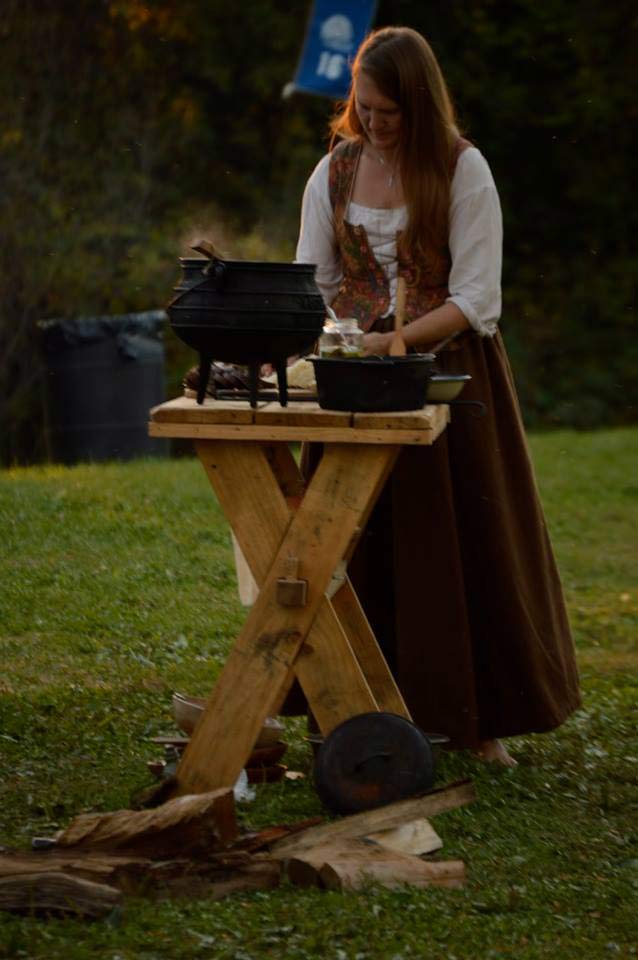Witch Trials
In looking at the witch trials of Europe, it becomes clear that the stereo-type of the Halloween hag - with her ugly looks, cackle and tendency to eat children caught nibbling at the eaves of her house- was not so far off the mark. The section of the population that was most often accused of witchcraft was the strange old woman, who by some fate, lived all alone. Men were occasionally charged with witchcraft - most often when the countryside was gripped with witch paranoia but this was the exception to the rule. In Essex County, England, for example, less than 5% of those accused on witch charges between 1560 and 1700 were men. Most accused witches were women between the ages of 50 and 70.
An author on the witch trials of southwestern Germany has suggested one reason for this sexual bias. Rather than blame it on "anti-feminine attitudes" of the Renaissance, or Reformation periods as other authors have, he points to a change in the marriage pattern of Europe.
"For the first time in all western history it seems men’s ages at first marriage rose to 25, or even 30. Whereas women "s ages at first marriage rose to 23 to 27. The proportion remaining single probably rose from about 5% to 15%, or even 20%... in a society accustomed to placing 95% of all women in marriage, the identity problems and role conflicts of perhaps 20% of all women might prove enormous."
Legally and philosophically, the basis of European society was the mate-governed family. When a single woman's father died, she would have no one to support her in her old age. If we add this to the decline of the nunneries during the 16th century, we find large numbers of unmarried women in a society with no place for them. This growing number of unmarried of unmarried and unsupported women may well have seemed terribly unnatural. In a society given to superstition and tom by religious strife, it is easy to see how they could have be singled out as old age and the,even now, misunderstood forms of senility set in.
Mary Matossian, the author of the book Poisons of the Past, has suggested a new theory which may further explain the worst of the witchcraft hunts all across Europe. During the worst witchcraft panics there are some common symptoms exhibited by the so-called "victims" of witches. These include "fits', or seizures, Gibbering, or incoherent speech, an inability to conceive children, miscarriages, cattle that do not reproduce, and an inability by both women and cattle to produce milk. All of these symptoms, the author argues, are also symptoms of ergot poisoning. Ergot is a type of mold that forms on rye grain.
Matossian presents some interesting evidence that ergot mold had a large part to do with the witch paranoia both in Europe and the colonies:
1) Ergot mold grows best if the weather has been fairly cold and damp. The climate during the worst of the witch trials seems to have been colder, on average, than the periods prior to, or since the witch trials.
2) Witch paranoia was rare in places that did not grow rye as a staple part of their diet. In Ireland, for example, massive witch-hunts were unknown, and it is believed that the Irish during this period ate primarily oats as their staple grain. In Scotland where some of the worst panics occurred, the trials were most common in area, where rye was grown, and yet they were absent in the northwest Highlands. This type of pattern seems to hold true on continental Europe as well.
If the author's evidence stands, Poisons of the Past, makes it easier to understand how our ancestors may have been swept up in the panics. It is only in the last century, or so, that we have gained any real understanding of the toxins in molds such as ergot.
Place yourself in the 1500's, or 1600's during the greatest religious upheavals of Europe, at witness your neighbors suffering from what may have been very real, but unexplained, symptoms of ergot poisoning. You need not have been an overly-superstitions person, you simply believed as you had been taught that the devil was a real individual with real powers. Suddenly it was much easier to believe in covens, and black Sabbaths as real gatherings, rather that just the nightmare creations of the inquisition and its tortures.

